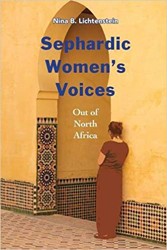By
– November 1, 2011
The Miriam Torah presents a thorough and engaging look at the role of dance in Sephardic women’s Jewish practice. Using biblical and rabbinic sources to provide context, Sautter explores the possible meanings of certain dances, focusing especially on how and when women might have performed these dances and how such dances might have fit into the practices of the Jewish community in general. Most noteworthy is Sautter’s incorporation of feminism and theory of dance into her analysis; these secular analytic tools shed new light on a fascinating subject.
Though overall an excellent work, a few sections of Sautter’s analysis slip from helpful explanation to conjecture stretched a bit too far. Readers will nevertheless appreciate the attention to detail and creative thinking that makes this book exceptional.
The Miriam Tradition is primarily intended for academic audiences. Readers will benefit from familiarity with well-known authors such as Rachel Adler, Judith Plaskow, Tikva Frymer-Kensky, and Carol Meyers as they read Sautter’s important contribution to this field. Bibliography, index, notes.
Rachel Sara Rosenthal is an environmental attorney in Washington, DC. Originally from Greensboro, North Carolina, she graduated from Duke University in 2003 and Columbia University School of Law in 2006.




